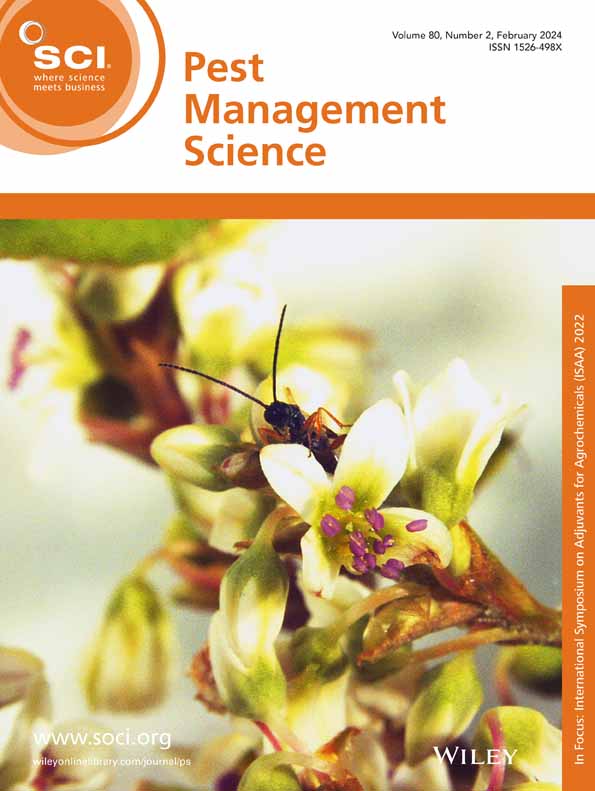基于YOLO图像识别的农田杂草检测器的现场评价:背景条件影响检测性能。
IF 3.8
1区 农林科学
Q1 AGRONOMY
引用次数: 0
摘要
用于杂草识别的图像识别工具,如智能手机应用程序,有可能增强用户的知识,提供早期入侵杂草警报,并实现特定地点的杂草管理。尽管许多研究报告了产品开发和模型准确性,但很少有人在开发环境之外的实际环境中评估这些工具。在本研究中,我们开发了一种杂草检测器,使用You Only Look Once (YOLO) v3目标检测算法来识别六种有毒杂草。具体而言,我们研究了:(i)图像采集位置、(ii)目标背景和(iii)相机设备对检测精度的影响,并通过日本68个地点的实地验证和对照花园实验评估了其适用性。结果图像中目标物种的背景对检测成功率有影响,背景和目标物种对检测结果有显著的交互作用。在最受影响的组合中(背景:托盘;与其他条件相比,平均精度(AP)值下降了~0.2。现场测试的AP值低于类似训练数据的测试数据的AP值,测试数据集的AP值与现场验证之间没有相关性。没有发现土地使用或摄像设备对探测成功有明显影响。结论本研究强调了背景在基于图像的杂草检测中的重要性,并指出了检测器适用性的局限性。我们的研究结果有望支持更有效的开发,并强调共享改进杂草检测工具的适用性数据的重要性。©2025化学工业协会。本文章由计算机程序翻译,如有差异,请以英文原文为准。
Field evaluation of an agricultural weed detector using YOLO image recognition: background conditions affect detection performance.
BACKGROUND
Image recognition tools for weed identification, such as smartphone applications, have the potential to enhance user knowledge, provide early invasive weed alerts, and enable site-specific weed management. Although numerous studies have reported product development and model accuracy, few have evaluated these tools in practical environments beyond developmental settings. In this study, we developed a weed detector using the You Only Look Once (YOLO) v3 object detection algorithm to identify six noxious weed species. Specifically, we examined the effects of: (i) image collection locations, (ii) target backgrounds, and (iii) camera devices on detection accuracy, assessing applicability through field verification at 68 sites across Japan and controlled garden experiments.
RESULTS
Detection success was influenced by the background of the target species in images, with significant interaction effects observed between background and target species on detection outcomes. In the most affected combination (background: tray; species: Ipomoea lacunosa), the average precision (AP) value decreased by ~0.2 compared with the other conditions. AP values in field tests were lower than those from test data resembling training data, with no correlation between AP values from test data sets and field verification. No clear effects of land use or camera devices on detection success were detected.
CONCLUSION
This study highlights the importance of background in image-based weed detection and identifies limitations in detector applicability. Our findings are expected to support more-efficient development and underscore the importance of sharing applicability data for improved weed detection tools. © 2025 Society of Chemical Industry.
求助全文
通过发布文献求助,成功后即可免费获取论文全文。
去求助
来源期刊

Pest Management Science
农林科学-昆虫学
CiteScore
7.90
自引率
9.80%
发文量
553
审稿时长
4.8 months
期刊介绍:
Pest Management Science is the international journal of research and development in crop protection and pest control. Since its launch in 1970, the journal has become the premier forum for papers on the discovery, application, and impact on the environment of products and strategies designed for pest management.
Published for SCI by John Wiley & Sons Ltd.
 求助内容:
求助内容: 应助结果提醒方式:
应助结果提醒方式:


